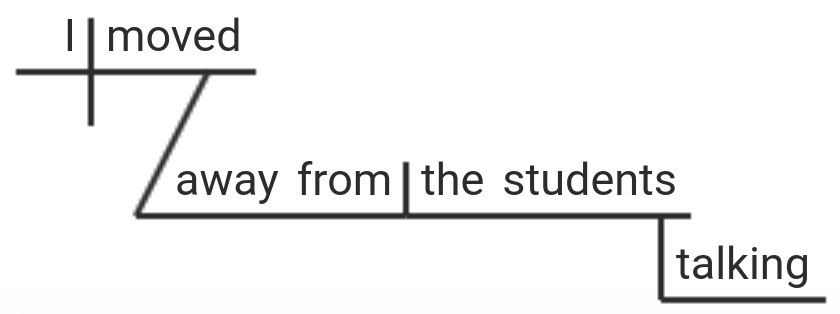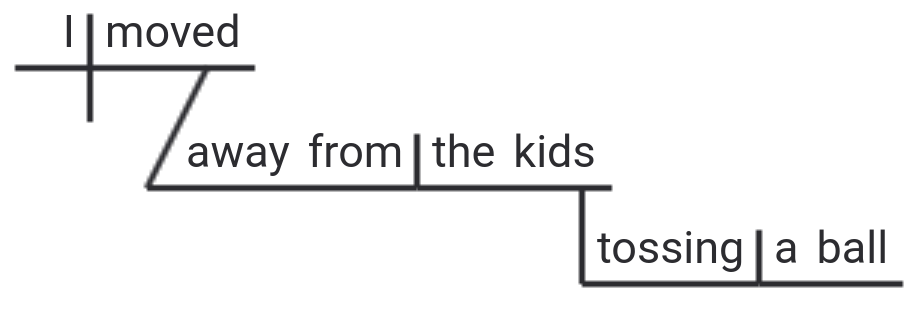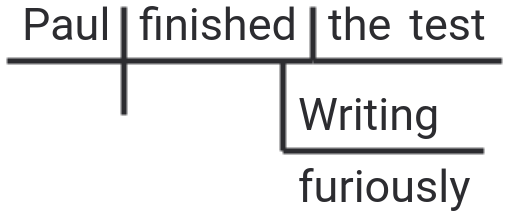Lesson 6: Relative Pronouns & More
Participles

The present participle is formed by adding the suffix -ing to the main verb, as in “running,” “learning,” “doing,” etc.
In Lesson 2, we learned about verb tenses and found that the progressive tenses are formed using the present participle: “I was learning,” (past progressive), “I had been learning,” (past perfect progressive). In this course, we have treated such constructions to be simply multi-word verbs and are not distinguishing the participle portion.
Participles are labeled Part, and diagrammed on the verbal modifier shelf.
Participles can be used adjectivally to modify nouns.


Notice the verbal modifier shelf is attached to the noun “students” to show that the participle is modifying it like an adjective. It is the students who are talking, so this is the participle’s borrowed subject. Notice also that participles are placed directly on the verbal modifier shelf, unlike infinitives.
Participles can also be the beginning of an adjectival participial phrase, as in this example:


Notice the participle “tossing” on the verbal modifier shelf and followed by the object shelf with the direct object of the participle.
As a third example, we have an adjectival participle followed by a prepositional phrase.


Participles can be used adverbially.
Participles can also act adverbially, as in “Writing furiously, Paul finished the test.” The participle “writing” is explaining how Paul finished the test. In similar fashion to infinitives, if you come to a sentence and are confused as to whether the participle is acting adjectivally or adverbially, ask what the borrowed subject is. If the subject is also the subject of the main verb, then the participle will be acting adverbially. If the subject of the participle is the direct object (or another noun in the sentence other than a subject of a finite verb), it will be acting adjectivally.

